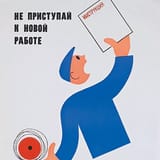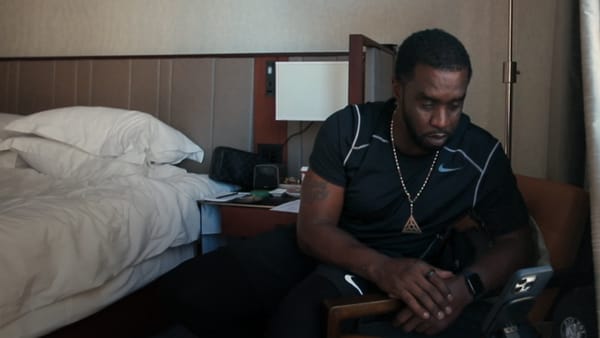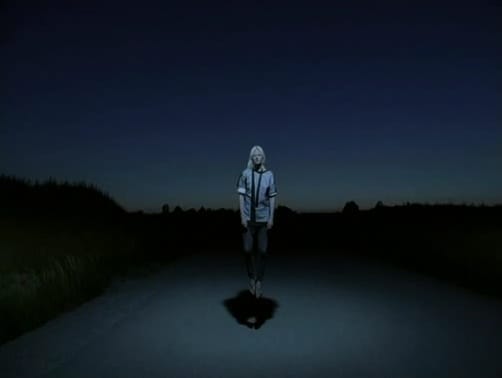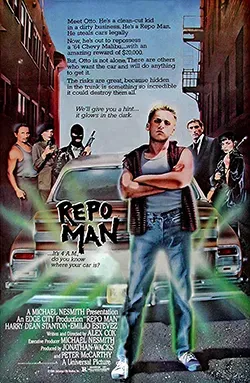1988-1991: Pop's interstitial period
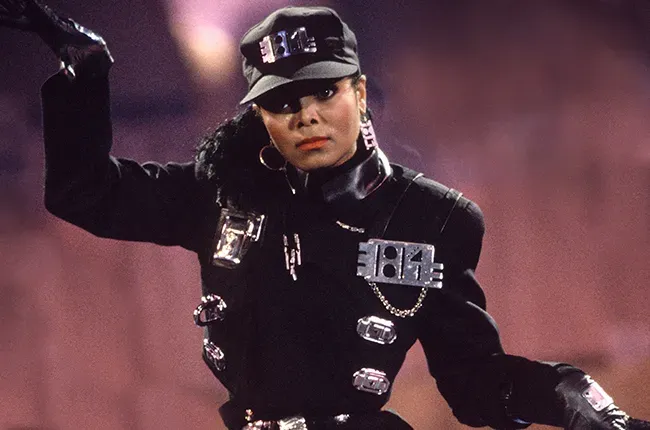
I've had a nearly lifelong obsession with what I've locally taken to calling pop music's interstitial period. It's a small window starting in about 1988 and definitely ending with the 1991 release of Nirvana's Nevermind and NWA breaking up (followed by gangsta rap's explosion).
The interstitial period is strange. Nobody seemed to know what to do after the collapse of synthy New Wave, the increasing exhaustion of hair metal, and the Big Three of the 80s (Michael Jackson, Madonna, and Prince) ranging further and further afield from the sounds which made them famous. Coupled with changes in technology (sampling, easily accessible synths, CDs, and sophisticated studio tech), the rise of house music, the importation of European strains of electronic music, the penetration of industrial into pop music, and a bunch of other stuff, pop musicians and A&R suits seemed more willing to take chances. It was born of necessity: the old ways were on their way out, full consolidation of the airwaves was still years away (Robin James is good on this), and nobody had a handle on what was coming next. Pop stars consistently made slightly off-kilter music which was still recognizably "pop" for Top 40 stations.
This is not to say it was all good. Most of it wasn't, but most music in any age loses its luster over time. What it was was interesting. And, for me at least, memorable, even if the interstitial period didn't leave much of a mark for most people. Which is one of the bits which makes it so strange. For all that pop music kept churning along, the biggest and/or most interesting acts didn't really have direct descendents. Even acts with real longevity, like Janet Jackson, did their experiments then switched things up. The whole era sort of appeared then disappeared.
Some standouts are below in no particular order.
Janet Jackson, "Rhythm Nation"
Janet Jackson's Rhythm Nation 1814 is her opus and this is the best track. Compared to her previously pastel aesthetics, Rhythm Nation is nearly unrecognizable (but is also definitely Janet Jackson) and so abrasive compared to its pop peers of the time that its popularity speaks to how odd popular music tastes were in 1989. There's been a quiet but long-running debate amongst rivetheads about whether this is an industrial track. It is. Robotic drums, layered samples, and a black and white video with everyone synchronized in military-esque garb place it at least as much in the realm of EBM as pop music. And, like much of the list, nothing on the pop charts sounded quite like this after.
But to keep some historical continuity, Rhythm Nation is also a throwback to socially conscious pop of the 1970s, the stuff we were all supposed to leave behind once Reagan took over. In that sense, it's simultaneously forward thinking and retro.
Jane Child, "Don't Wanna Fall In Love"
Released in 1990, Don't Wanna Fall In Love starts with a farty bass synth solo and moves to frankly disconcerting orchestral stabs. Jane Child can sing, but the big voiced warbling over the frenetic music disorients you. And her look is pure interstitial: frizzed up hair jutting straight up, a braided mullet cascading down her back, and a nose ring attached to her ear by a chain (really, men in 2025 have to stop being weird about nose jewelry if they're simultaneously going to fetishize the heyday of the SNES because, between Janet Jackson's BDUs and Jane Child's jewelry, the feminine aesthetic hasn't been Marilyn Monroe for longer than they think).
Milli Vanilli, "Girl You Know It's True"
I can't imagine I'm the first to say it but that just makes me feel vindicated: Milli Vanilli were done dirty by the music press and the public. They were clumsy about their lip syncing and absolutely there's an argument that they perpetrated a minor fraud but the real sin is that they did it all too early. Nothing they did is terribly out of the ordinary in 2025. Lip syncing live? Incorrect credits on liner notes (ok there aren't liner notes)? Vocal production keeping mistakes out of earshot? An emphasis on dancing over singing? Reader, that's every member of the Disney Pop Army.
And in any event, what of the aesthetics? That the money making move was to foreground two European Black men, one French and the other German, is a curious marker of the era. The suits don't break that out in the comparatively staid early 80s and by the time the late 90s roll around the sheer machoness of the culture would preclude something so recognizably foreign to Middle America. And the album is filled with pop bangers. I had my first real slow dance, including my dance partner putting my hand on her butt, to "Girl I'm Gonna Miss You" at UNC-Greensboro's band camp. All of which is to say that anyone who was in their early teens at the time who retroactively claims they hated Milli Vanilli is probably a liar.
EMF, "Unbelievable"
The first "alternative" track (fraught as the category is) to reach number one in the United States wasn't something by The Cure, Depeche Mode, or Nirvana. It was EMF's Unbelievable. Loosely part of the UK's grebo scene, it's (again) a sample heavy, house inflected track which had no business ruling the pop charts. The song was everywhere in 1990 and 1991. It's tough to revisit because it was so overplayed but that it was so overplayed indicates what was coming in late 1991.
My friend Philip would ask his mom for candy bars at the checkout line until she'd yield, whereupon he would sing the chorus to her until it drove her nuts.
Roxette, "The Look"
Synthpop or rock? Yes. Again, the Europeans were doing slightly off-kilter stuff without America's genre obsessions. The pull here, besides the INXS influenced guitars over the low in the mix synth pulses, is Gun-Marie Fredriksson's vocals. She belts her vocals. And, again, the aesthetics: a shock of spiky bleached hair and an outfit which might be a matador's outfit.
Technotronic, "Pump Up The Jam"
It's not an accident that the real dance floor banger to penetrate the US charts came from Belgium. At the same time Technotronic seemed like a one-off, New Beat ruled Belgium. While Technotronic were warmer than their compatriots, they maintained a decidedly colder synth sound than you heard on American dancefloors. Again, Europeans shaking things up and foreshadowing what was to come. Because...
Nine Inch Nails, "Head Like A Hole"
This isn't exactly pop in the way the others are but, speaking of cold sounds and foreshadowing, Nine Inch Nails' debut dropped in 1989. I can't say I'm a big fan of Nine Inch Nails and they weren't the band that got me into industrial (Nitzer Ebb then Skinny Puppy were) but their/his importance is undeniable. Before the disaffected sounds of grunge broke big, NIN was percolating, blending the abrasive sounds of industrial with pop hooks. Listen closely and the guitar on Head Like A Hole is awfully similar to the guitar on Unbelievable. That represents a shift in what people wanted from their guitars and it wasn't Every Rose Has Its Thorn.
Paula Abdul, "Opposites Attract"
I hate Paula Abdul's music. When I was a kid, my brother and I had a quiet cold war over the jam box. It was his, the NES was technically more mine than his, so we'd negotiate who controlled which by trading stewardship over our respective devices. But then he got really into Paula Abdul and I rented Baseball Simulator 1.000. He was annoyed by this so started playing Paula Abdul really loudly and wouldn't relent until I ate an entire bag of Tootsie Rolls, which I also hate. Then I threw up and probably punched him.
The video is what stands out as odd. A love story between Abdul and a cartoon cat MC Skat Kat in the wake of Who Framed Roger Rabbit, the novelty of blending live action with traditional animation carries a mediocre song to... something. It's still mediocre but what is this and why didn't anyone else do this? Because everyone was throwing stuff against the wall.
Sinead O'Connor, "Nothing Compares 2 U"
We didn't know we were in the presence of a legend at the time but we were. Strip away all the context of what came after and think of this song in a vacuum. An Irishwoman with a shaved head singing in a style few had ever heard and which certainly never cracked the charts. An absolutely austere video of said Irishwoman in a black turtleneck in front of a black background. The repetitive, simple music which never has a break in tempo, key change, or solo. A strange magic.
I'm trying to be aware of making these too long but there's so much other music which, in retrospect, seems like it could only arrive in this little snippet of pop cultural history when the old ways didn't work as well as they did but the new ways hadn't calcified yet. Stuff I didn't mention:
- The pop house of Cathy Dennis.
- The stadium house of The KLF.
- Guy sort of inventing New Jack Swing with Teddy's Jam.
- Hip hop artists like Tone Loc and Young MC bridging what would become gangsta rap and older styles of party hip hop.
- Enigma and Enya breaking big and taking what would become an entire sound and aesthetic along with them.
- The search for a white rapper which only worked in the exceedingly short term.
- Seal's Crazy, which still sounds so futuristic it makes my heart hurt.
- REM breaking out of college radio and becoming the biggest rock band in the world.
